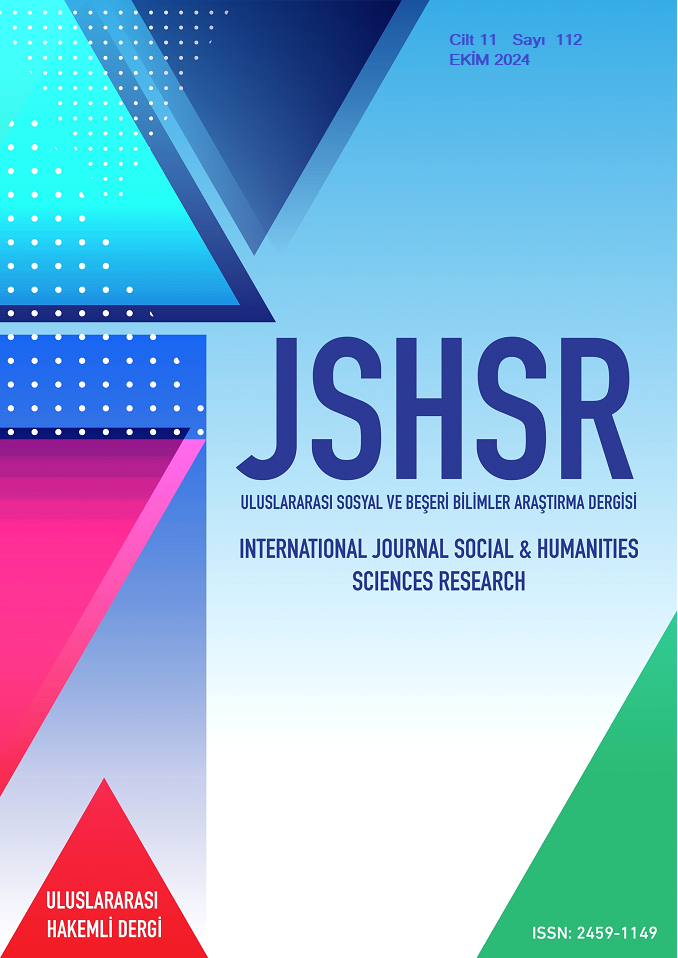Potential Usage of Fractal Geometry In Architecture
DOI:
https://doi.org/10.5281/zenodo.13960067Keywords:
Fractal geometry, architecture, urban designAbstract
From history to the present, research on numbers, ratios and formal interactions in the relationship between architecture and geometry has been intensively conducted, and searches for the ratios of structures to be built have continued in both classical and modern architecture. In the 1970s, mathematician Benoit Mandelbrot claimed that natural systems generally have characteristic geometric or visual complexity at more than one observation scale, and his geometric research, which began with Euclid, was developed towards the end of the 20th century in relation to irregular structures. The difficulty of modeling nature and the inadequacy of the geometry used and accepted as the most accurate (Euclid) in this regard are the biggest factors in this. At this point, fractal geometry offers solution opportunities for dynamic systems in irregular, geometrically structured forms, complex mathematical planes.
Within the scope of this study, a chronological framework has been drawn regarding the use of fractal geometry in architecture from the past to the present, specifically in the field of fractal geometry. In addition, the focus has been on the research of the areas of use of fractal geometry in parallel with developing technologies and the potentials it offers for the future. Many studies show that fractal formations have a clear reflection on architectural products. In this context, it is seen that fractal geometry is intensively studied under the headings of Organic and Biomorphic Building Design, Complex and Dynamic Building Design, Interactive and Responsive Designs, Sustainable and Energy Efficient Building Design, Aesthetic and Experiential Design. As a result, it is thought that as our understanding of technology and fractal geometry continues to advance, innovative and impressive applications in architecture and urban design will increase.
References
Ağırbaş, A. (2019, June 26–28). A proposal for the use of fractal geometry algorithmically in tiling design. Proceedings of CAADFutures, Daejeon, Republic of Korea, 438-453.
Al-Dabbagh, A.A & Aldeen Ismail, K.J. (2024). Using Fractal Geometry in Studying Architectural and Urban Patterns. International Journal of Sustainable Development and Planning, 19(6), 2051-2058. https://doi.org/10.18280/ijsdp.190605
Ali, M. (2014). Contemporary Architecture Design through Bionic fractal: An approach of integrated Bionic Fractal geometry. 1st Architectural Forum on Architecture & Deconstruction (Peer Reviewed Conference Proceeding), DOI:10.5281/zenodo.3359537
Ancona, A. J. (2017). Healing Through Bio-Geometries: A Study of Designed Natural Processes [Master's thesis, University of Cincinnati]. OhioLINK Electronic Theses and Dissertations Center. http://rave.ohiolink.edu/etdc/view?acc_num=ucin1491303530064519
Archdaily. (2020). AD Classics: Kanchanjunga Apartments / Charles Correa. https://www.archdaily.com/ 151844/ad-classics-kanchanjunga-apartments-charles-correa
Archdaily. (2020). Sydney Opera House. https://www.archdaily.com/911580/7-rejected-proposals-for-sydney-opera-house?ad_source=search&ad_medium=projects_tab&ad_source=search&ad_ medium= search_result_all
Archdaily. (2024). Grand Egyptian Museum. https://www.archdaily.com/1015023/exploring-the-grand-egyptian-museum-through-photography-bridging-past-and-present-in-cairo?ad_source=search &ad_medium=projects_tab&ad_source=search&ad_medium=search_result_all
Arkitektuel. (2020). Habitat 67. https://www.arkitektuel.com/habitat-67/
Attia, D. I. I. (2021). A Sustainable Biomimetic Fractal Design Method to Illuminate the Interior Environment of a Single-Floor Building. International Journal of Architectonic, Spatial, & Environmental Design, 15(1).
Bovill, C. (1996). Fractal Geometry in Architecture and Design. Springer Science+Business Media.
Hmidet, İ. (2020). Bionic Design Architectural Innovations Inspired by Nature with a Focus on Concrete Shell Structures. [Bachelor Thesis, Technical University of Munich TUM]. DOI: 10.13140/RG.2.2.25490.48329
Inhabitat. (2024). Marin Civic Center. https://inhabitat.com/frank-lloyd-wright-designed-marin-civic-center-in-san-rafael-turns-50/
Joye, Y. (2007). Fractal Architecture Could Be Good for You. Nexus Network Journal, 9(2), 311-320.
Lu, X., Croome, D. C. & Viljanen, M. (2012). Fractal Geometry and Architecture Design: Case Study Review. Chaotic Modeling and Simulation (CMSIM), 2, 311-322.
Mandelbrot, B.B. (1983). The Fractal Geometry of Nature. W.H. Freeman and Company.
Ostwald, M.J. (2001). “Fractal Architecture”: Late Twentieth Century Connections Between Architecture and Fractal Geometry. Nexus Network Journal, 3(1), 73-83. Erişim adresi: https://link.springer.com/article/10.1007/s00004-000-0006-1
Ostwald, M.J. & Tucker, C. (2007). Reconsidering Bovill’s Method for Determining the Fractal Geometry of Architecture. 41st Annual Conference of the Architectural Science Association ANZAScA 2007 at Deakin University, 182-190.
Ostwald, M. J. & Vaughan, J. (2016). The Fractal Dimension of Architecture. Mathematics and the Built Environment. Springer International Publishing.
Palabıyık, S. & Demircan, D. (2020). Mimarlıkta Hesaplamalı Tasarım Yöntemlerine Ait Potansiyellerin Yaşam Döngüsü Modeli Üzerinden Değerlendirilmesi. International Refereed Journal of Architecture and Design, 21, 91-123. Doi: 10.17365/TMD.2020.21.5
Patuano, A. & Tara, A. (2020). Fractal Geometry for Landscape Architecture: Review of Methodologies and Interpretations. Journal of Digital Landscape Architecture, 5, 72-80.
Rian, I.M., Sassone, M. & Asayama, S. (2018). From fractal geometry to architecture: Designing a grid-shell-like structure using the Takagi–Landsberg surface. Computer-Aided Design, 98, 40–53. doi.org/10.1016/j.cad.2018.01.004
Sala, N. (2006). Fractal geometry and architecture: some interesting connections. G. Broadbent & C. A. Brebbia (Eds.), Eco-architecture: Harmonisation Between Architecture and Nature içinde (s. 163-173) WIT Press. doi:10.2495/ARC060171
Tripsavvy. (2024). Institut du Monde Arabe. https://www.tripsavvy.com/institut-du-monde-arabe-in-paris-1618647
Yu, Z., Sohail, A. & Jamil, M. (2023). Hybrıd Algorithm for The Classification of Fractal Designs and Images. Fractals, 31(10), 2340003_1- 2340003_11. DOI: 10.1142/S0218348X23400030
Wikipedia. (2020). Eiffel Kulesi. https://en.wikipedia.org/wiki/Eiffel_Tower.
Wikipedia. (2024). Kandariya Mahadeo Tapınağı. https://tr.wikipedia.org/wiki/Hindu_tap%C4%B1na% C4%9F%C4%B1#/media/Dosya:Khajuraho_-_Kandariya_Mahadeo_Temple.jpg
Downloads
Published
How to Cite
Issue
Section
License
Copyright (c) 2024 INTERNATIONAL JOURNAL OF SOCIAL HUMANITIES SCIENCES RESEARCH

This work is licensed under a Creative Commons Attribution 4.0 International License.


